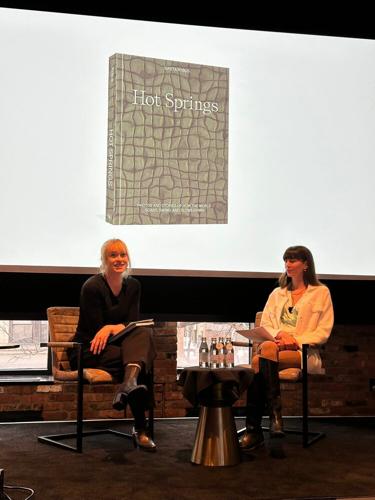In 2020, I co-founded Hamam: The Magazine of Letting Go, a print-only magazine dedicated to the art and culture of bathing. At the time, the idea of a bathing revival felt more like a quiet ripple than a wave. Communal bathing, once woven into the fabric of daily life in so many cultures, had largely disappeared from public consciousness in North America. The ancient hammams, bathhouses and hot springs that had shaped human connection for centuries had been replaced by the private, the individual, the transactional. And yet, in our research, in our interviews, in the voices of bathhouse builders and sauna evangelists, something was becoming clear: Bathing was coming back.
Fast forward to 2025 and the ripple has turned into something much bigger. Across the continent, new bathhouses are opening, old ones are being rediscovered, and a new generation is stepping into the steam, not just for relaxation but for something deeper.
In January, I had the chance to witness this shift firsthand at the first-ever Culture of Bathing gathering in New York City, a three-day immersion into the world of modern communal bathing. Part symposium, part pilgrimage, part social experiment, it brought together sauna builders, architects, hot spring seekers, hydrotherapists, bathhouse owners, anthropologists, artists, and anyone who believes as I do that the bathhouse is not just a place but a way of being.
It was a weekend of slow conversations and deep heat, of ideas exchanged between rounds of cold plunges. We spoke about the architecture of immersion, the politics of access, the way steam softens not just the body but the boundaries between us. And, of course, we bathed.
But on the second night, something else happened. Bathing took the stage.
The Culture of Bathing Variety Show transformed the New School Auditorium into a kind of fever dream for the water-obsessed. Hosted by the impossibly sharp Negin Farsad, the evening unfolded as a tribute to the many ways we soak, sweat and submerge. Leonard Koren, the mind behind WET Magazine, reflected on the aesthetics of bathing, its ability to exist at the intersection of art and necessity. Machine Dazzle, part performance artist, part mythmaker, brought a theatricality to the act of immersion. Dan Harris, former news anchor turned mindfulness evangelist, made the case for steam as a meditation in its own right. Mikkel Aaland, who has spent a lifetime documenting sauna culture, reminded us sweating together is one of the most ancient human experiences.
I had the privilege of interviewing Greta Rybus on stage about her book, "Hot Springs: Photos and Stories of How the World Soaks, Swims, and Slows Down." For seven years, she traveled the world tracing the pathways of water, photographing the people and places that have made bathing a sacred act. From the onsen of Japan to the volcanic springs of Iceland, from the high-altitude pools of Chile to the ancient hammams of Morocco, her work captures something that is at once deeply personal and profoundly universal: the way we return to water, again and again, as if answering a call we don’t fully understand.
And then, in true Culture of Bathing fashion, we didn’t just talk about bathing. We bathed.
The crowd — 150 of us — spilled out into the night, making our way to three bathhouses across the city for the Bathhouse Bathe-Around. At Elhani, Othership and the Russian & Turkish Baths, the conversations continued, only now they were happening in steam-filled rooms, in cold plunges, in the soft glow of sauna light.
There is something about sitting shoulder to shoulder with strangers in the heat, breath slowing, skin flushed, that makes you forget time altogether. The night stretched on the way time does when you let it, when there is no phone to check, no schedule to keep — only the quiet rhythm of sweat and surrender.
In the heat, the body stops performing. Stripped of clothes, of pretense, of the endless obligations of modern life, something loosens. Time bends. Conversations start and stop, or don’t happen at all. In the silence, in the rising steam, you begin to remember, how natural it feels to be shoulder to shoulder with strangers, how easy it is to exist without hurry, how little we actually need to feel whole.
Communal bathing was never just about water. It was about permission to pause, to connect, to belong. And in that moment, sweating in the dim light of a centuries-old ritual, I knew: This isn’t something we’re bringing back. It’s something we’re finally letting ourselves return to.

















(0) comments
Welcome to the discussion.
Log In
All comment authors MUST use their real names. Posts that cannot be ascribed to a real person
will not be moderated.
Keep it Clean. Please avoid obscene, vulgar, lewd, racist or sexually-oriented language.
PLEASE TURN OFF YOUR CAPS LOCK.
Don't Threaten. Threats of harming another person will not be tolerated.
Be Truthful. Don't knowingly lie about anyone or anything.
Be Nice. No racism, sexism or any sort of -ism that is degrading to another person.
Be Proactive. Use the 'Report' link on each comment to let us know of abusive posts.
Share with Us. We'd love to hear eyewitness accounts, the history behind an article.